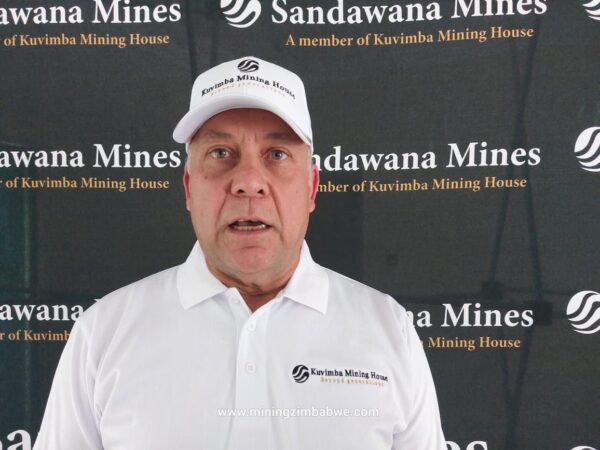Kuvimba Mining House (KHM)‘s Sandawana Mines in its quest to support the government’s objectives to enhance and advance the value addition and efficiency of the mining industry in Zimbabwe, is planning to produce battery-grade lithium in the form of lithium carbonate by 2030.
Rudairo Mapuranga
While it is true that the establishment of a converter/plant for battery-grade lithium needs green or renewable power, natural gas, food-grade carbon dioxide, and first-class sodium carbonate among other auxiliary and supporting materials which are short supply in Zimbabwe and Africa at large, Sandawana lithium project as part of its plans, will formulate a strategy to come up with battery grade lithium in the form of either lithium sulphate or lithium carbonates by 2030.
According to Kuvimba Head of Energy Cluster Travor Barnard, KHM prioritizes the Sandawana lithium project development and is planning to make the mine fully operational in the first quarter of 2025 where the mine will be producing lithium concentrates for sale to off-takers.
The next stage according to Barnard will be the establishment of a lithium sulphate plant and eventually the establishment of a lithium carbonates processing plant with the process taking the mine three to four years from the date of full operations.
“Our first priority is the development of Sandawana Mines into a fully operational mine. First of all, we will produce lithium concentrates for sale to off-takers who will convert it into the components used for battery manufacturing but certainly, we also believe that we can actually also produce those further materials here within Zimbabwe starting off with lithium sulphite and eventually lithium carbonates.
“Just broadly, our priority is to get Sandawana Mines to a fully operational mine and I believe that it will take us to 2025. The next step from there I would imagine we will have up to 3-4 years to be able to produce lithium sulphate or lithium carbonates whichever that we will have decided on within Zimbabwe, probably around 2030.
Progress with the Sandawana project
According to Sandawana Mines General Manager Mr Godwin Gambiza, the lithium project is currently at phase 1 of exploration and mine development which has seen the mine getting an average grade of 1.85% lithium spodumene which will position the mine as the best in Africa.
“We are literally done with the first stage of exploration. On phase one we drilled 103 thousand metres translating to about 584 diamond drilled holes. What we are doing now is dispatching the samples to accredited labs in South Africa. The two are internationally accredited in terms of ISO17025. I can say out of the 32 thousand exploration samples, 60 per cent of them are now in SA. We are now preparing the next two batches so that the next 40 per cent is in SA. In terms of the timeline of our samples in SA, we are targeting the 25th of September. Out of that about 1500 of them we have received results, the average grade is 1.42% and 1.84%. The 1.42 we are getting at zero cut off and the 1.84 we are getting at a cutoff of 0.5%. We hope the balance of the samples will also be giving us the same encouraging results which position Sandawana deposits as the best in Zimbabwe or probably the whole world,” Gambiza said.
According to Gambiza, the mining activities for the Sandawana lithium open pit began in January this year, and a total of US$56 million has been invested in the lithium mining project to date. He said Sandawana Mines was currently working with a consortium towards the construction of a beneficiation plant with the pre-feasibility study of the project already underway.
“We are already working with another consortium towards full mine development and also towards a beneficiation plant. We have already commenced proceedings, the prefeasibility study as well as the definitive feasibility study targeted to complete those studies by December this year. For the commissioning of the plant itself it will need about 10 to 18 months to complete so by the first quarter of 2025 we should have a beneficiation plant operating in Sandawana,” he said.
KMH, which is 65% government-owned, took over Sandawana Mines in 2019 and plans to invest US$250 million towards the development of a beneficiation plant at the mine.
.png)




